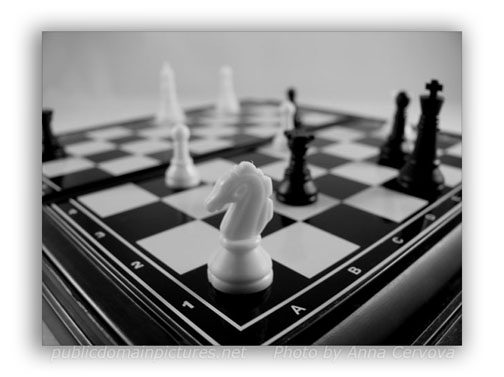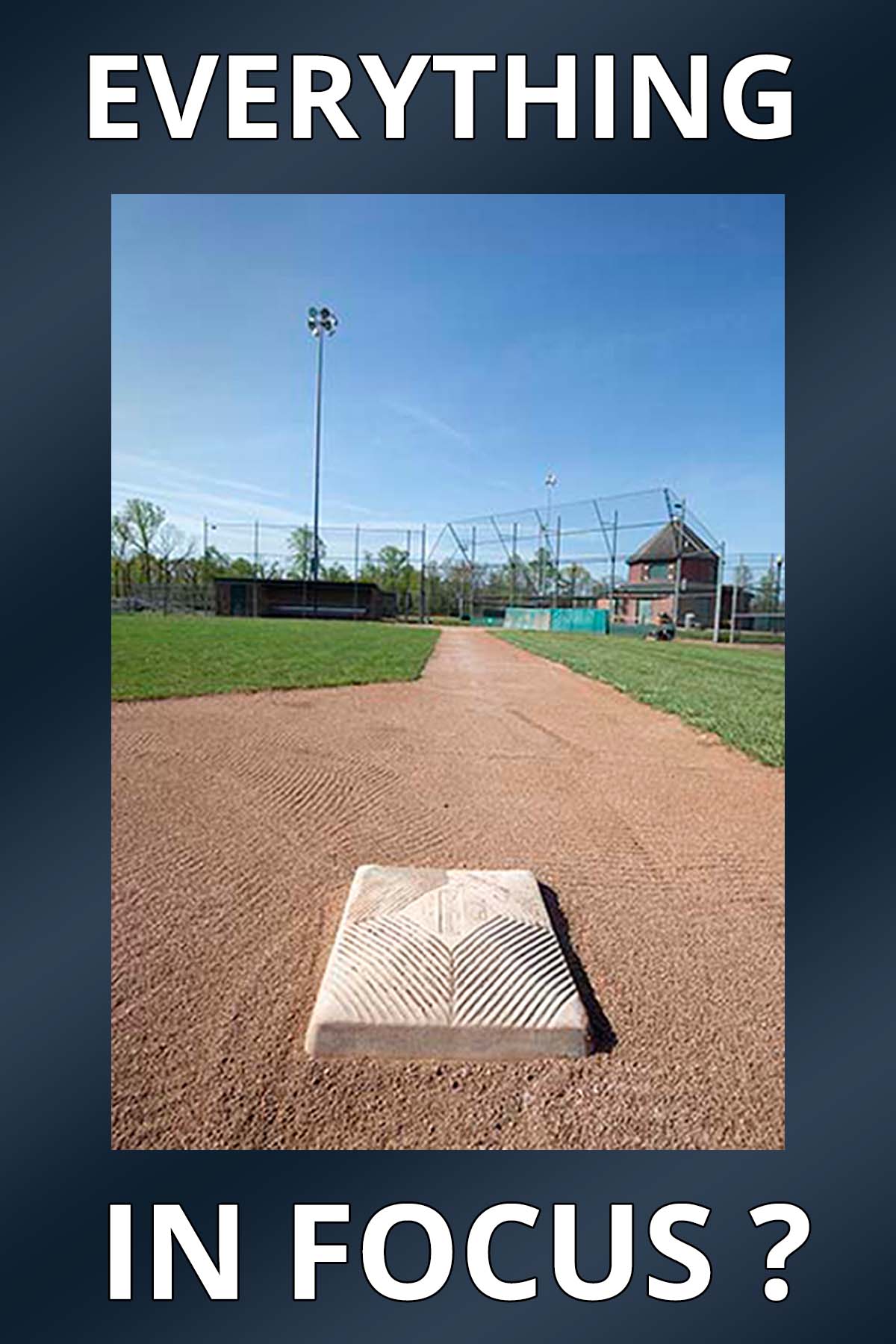HOW TO POSTS: LIGHTING AND COMPOSITION
9 examples of depth of field
WRITTEN BY: BRUCE LOVELACE
UPDATED: March 27, 2024
These examples of depth of field will help you develop an ability to control the amount of blur you want with your background. In this first example I used a wide open lens aperture to intentionally blur the background and emphasize the yellow flowers as the main subject.
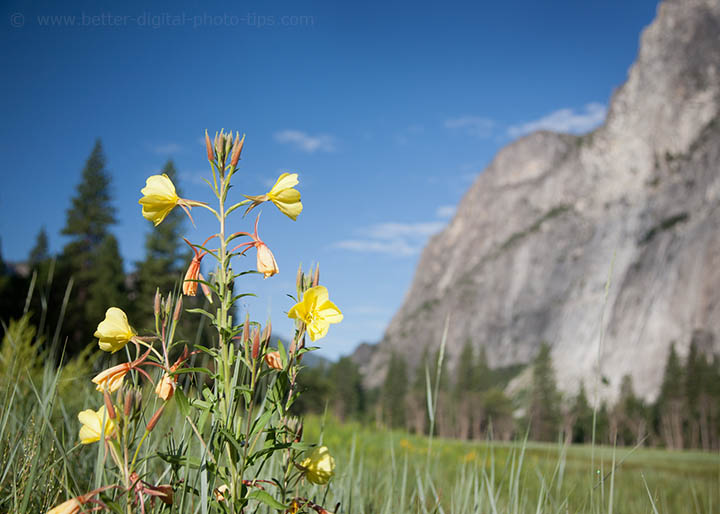 Control the depth of field to get the right amount of background blur.
Control the depth of field to get the right amount of background blur.Lens at f/4 for shallow depth of field
These sample photos illustrate why depth of field is such an important element of photography to understand and control when you're composing your photo. In this photo of the yellow flowers in the valley at Yosemite, I wanted to include part of the El Capitan rock face to create some size perspective. I didn't want to have the granite surface too sharp and detract from the main subject, the flowers. I opened up the lens to a wide aperture of f/4.
You can learn a lot from viewing photos taken by other photographers and observing depth of field. Making the conscious decision to pay attention to the range of things that are and aren't in focus is a great way to learn and improve your own photos.
Each photo in this post has a brief critique explaining how the the subject, and even the lighting sometimes, matter and determine what amount of depth of field should be used. Take your time to observe each image briefly, before you read the critique.
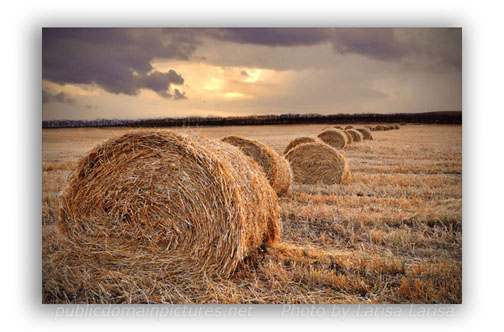 Deep depth of field
Deep depth of fieldEverything is in focus.
This photo of Strawfield by Larisa Larisa was taken with a Nikon D5000. It was shot at f-8.0 and a 22mm focal length. Both the 22mm wide angle focal length and the smaller sensor size (APS-C) of the D5000 help to give this photograph a deep depth of field. Having everything in focus creates a sense of depth as your eye travels into the photo from the large hay bales to the increasingly smaller bales amd on to the sky in the far distance.
Farmscapes, like other landscape photos, usually come out better when you use settings that give you good depth of field. The third factor in determining the amount of depth of field is the choice of /stop.F/8 is a middle-of-the-range setting when shooting a landscape photo like this with a digital SLR like the Nikon D5000.
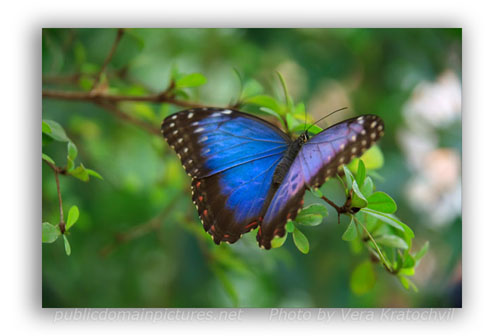
This depth of field example shows why a shallow depth of field is often beneficial when you shoot close-ups and macro photography. A shallow depth of field makes the background go blurry and separates the subject from the background.
This nature photo was taken with a 170mm focal length at f5.6 and a Canon 5D Mark II. Vera Kratochvil named it Blue Morpho Butterfly.
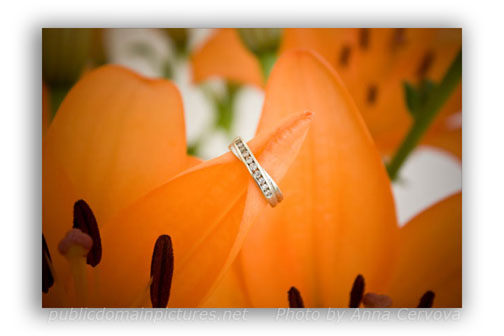
Anna Cernova took this remarkably elegant Engagement Ring photo with a Canon 450D, set at 55mm and a lens setting for f5.6. The flowers in the background are blurred enough to not be a distraction, but sharp enough to be easily identified as more flowers.
In some photographs if your depth of field is too shallow and the background goes too blurry, your photo may be not as interesting. It's your challenge, as the artistic photographer in control of your camera settings, to determine what is the best route to take.
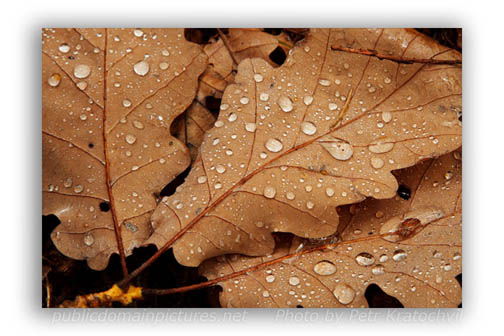
Petr Kratochvil set his Canon 5d Mark II to f13 in order to keep all of the water droplets on the leave in focus. The closer you are to your subject the more important it becomes to "stop down" your lens to have a deep enough depth of field to maintain sharpness through the photograph.
If you'd like to contribute own nature photo and have it critiqued as one of the examples of depth of field scroll down.
Most of the examples of depth of field I've included are with nature photography because I am a nature geek. The example below takes a common item and makes it interesting by controlling several aspects of good photography technique.
This black and white photo of the chessboard is more interesting with a shallow depth of field. The white knight is emphasized more because of the narrow depth of field, combined with the extreme wide-angle focal length that Anna Cervova used.
This just goes to show you that you can create great photos using ordinary objects with an understanding of composition, perspective, lighting and depth of field.
more examples of depth of field
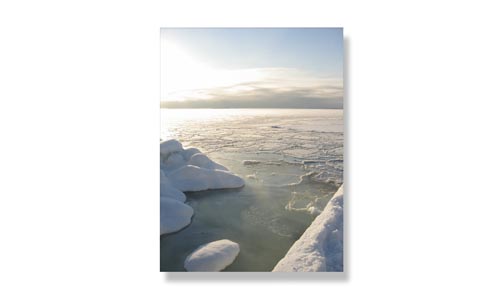
Here is a great example of a situation where you want a large range of distances to have good focus. It would be distracting if the snow in the bottom right section of the photograph were blurry.
That snow area in the foreground on the right and the snow on the left were included in the composition on the sides and act like framing devises. Notice that the channel of water comes in from the lower left and serves as a diagonal leading line into the photograph.
This snow scene has good visual depth because the photographer included objects within the frame at different distances. This gives the viewer of this icy scene several places for our eyes to travel to within the photograph.
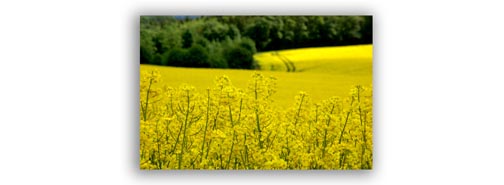
Here is a good example of when a shallow or narrow depth of field is desirable. The lighting on the yellow flowers in the foreground is the same as the lighting on the more distant yellow flowers directly behind them. If everything were in focus, there would be no visual separation between the two groups.
The yellowish color on the tree tops in the distance tie in nicely with the color of the flowers. Notice that the Rule of Thirds in Photography was generally used in all four of these photographs.
tip for CONTROLLING depth of field
One way to increase depth of field is to use a slower shutter speed. That will let you use a higher f-stop and still get a good exposure.
However, that may make it challenging to hold your camera steady enough to get a sharp photo without blur from even the slightest camera movement.
A great tool to use to steady your camera, that's light and easy to carry, is the monopod. Monopods are lighter than tripods and can help you get sharp photos when you only need a little bit assistance in steadying your camera.
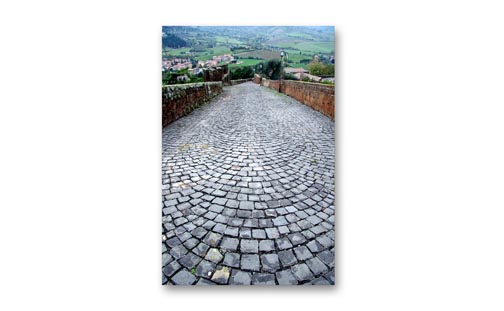
This is one of those examples of depth of field where a wide-angle lens setting was chosen. This has two effects on the composition.
Wide-angle lenses will give you a deep depth of field and they create more rapidly converging lines. The narrowing brick walkway produces a feeling of a long distant downward journey to the valley below.

The lighting at dusk was a a soft broad light and shadows do not play into the composition. The feeling of depth is created by the narrow depth of field.
If a wide angle lens setting had been used, there would have been a larger range of things in focus. The progression of the pavement from sharp to out of focus creates the feeling of a large expansive area. The viewer might ponder why has the ball been left there by itself. Was the game interrupted or are the players taking a break out of the camera's view?
The out-of-focus lights in the background are actually distracting, but they would be more distracting if they were in focus.
These examples of depth of field show that it's an important consideration when composing your photograph. Here are some more related articles:
What is Depth of Field? Here are a few different definitions and more examples of depth of field with a specific side by side demonstration using 3 different focus points.
Shallow Depth of Field Examples. This page has a few more sample photos that show the importance of paying attention to Depth of Field.
Deep Depth of Field Examples. Photos that have a deep or large depth of field.
Depth of Field Comparison. Comparison of three photos, using the exact same camera, subject and background distances. Discussion of how changes in aperture and distances are also major factors in what stays in focus and what doesn't.
For a simple explanation of depth of field, watch this short video produced by Canon Camera:
Keep shooting. Keep learning. Keep improving.


ABOUT BRUCE LOVELACE
Bruce is the publisher of this website. He is the author of the book "Improve Your Photography Instantly." Read more on Bruce on his Bio Page. He's been known as The Traveling Photographer ever since 1994. Read more about this website.
View some of Bruce's photos on Instagram. Visit the Facebook Page. Watch him on YouTube. Bruce runs photo workshops for kids and adults, and provides one-on-one photography coaching.
Digital Photography Education Location on Google My Business
Examples sent in from readers:
MACRO PHOTOGRAPH OF DRAGONFLY
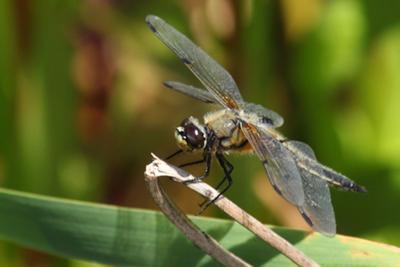
A relatively small lens aperture was needed just to keep most of this dragonfly in focus. A long telephoto was used and the depth of field was narrow despite the lens opening of f-8
- Photographer: Petr Kratochvil
- Camera: Canon EOS 5D Mark II
- Shutter speed: 1/320
- Aperture: f 8.0
- Focal length of the lens: 400 mm
COFFEE BEANS-EXAMPLE OF NARROW DEPTH OF FIELD

One of the types of photography I enjoy tinkering with is macro photography. Depth of field really comes into play as a big factor in the final photo.
Although this example is not a true macro image by definition, the depth of field is very narrow due to the following:
- close focus distance,
- telephoto lens,
- large aperture,
- large size sensor.
Technical data:
I used a single 13mm Opteka lens extension tube with my Canon 85mm f1.8 lens and Canon 20D SLR, mounted my my Manfrotto 3021 tripod with pistol grip ball head.
Exposure was f-3.5 at 1/50 second, ISO 400 using natural window light, coming through my kitchen window from the right, with a large white reflector board filling the shadows on my left.
I am a natural lighting geek and I love fresh ground coffee, so the idea came to me to create a still life photograph. I wanted to use the coffee beans, natural lighting and at least one of my extension tubes to create a decent narrow depth of field example.
It's not an award-winning photo for sure, it lacks a center of interest, but it is a good example of how you can control the focus and depth in your image and get an interesting result.
SHALLOW DEPTH OF FIELD-SPIDERWEB
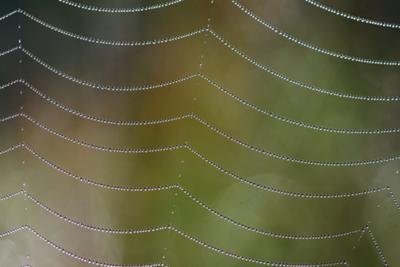
When doing macro photography depth of field is always a big factor in the end result of your photo. In this example taken by Petr Kratochvil, the narrow depth of field is necessary to separate the tiny details of the subject from the background.
Our talented photographer used a large f-4.5 aperture with a 100mm lens to get the desired shall depth of field. The composition is quite simple and shows the delicate nature of the finely woven tapestry of the spider.
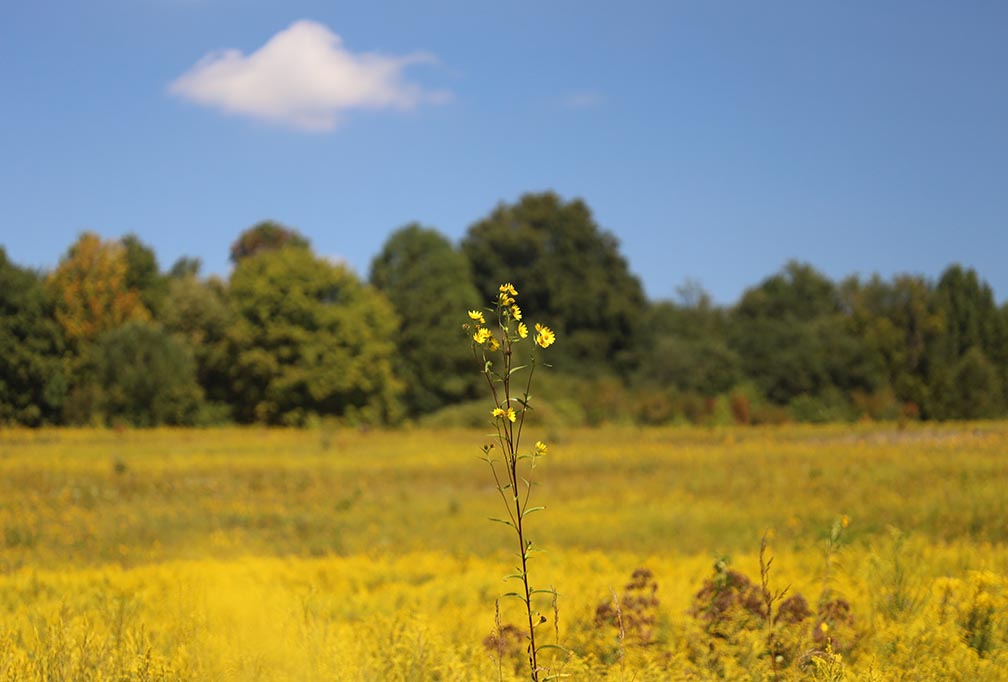 Good visual separation of subject from background.
Good visual separation of subject from background.100mm lens set at f/2.8 yields small depth of field.
In the photo above I purposely opened my aperture all of the way to the lens maximum f-stop of f/2.8 to emphasize this lone taller flower against the background. I also specifically positioned myself so that the darker trees were behind the subject for additional separation between the main subject and the background.
